On Gold Mountain Read online
Page 21
And so it was that early in 1921, Fong See, a man in his mid-sixties, married Ngon Hung, a beautiful sixteen-year-old with high cheekbones and fine skin. Within the prescribed time, Ngon Hung gave birth to a daughter whose name, Jong Oy (Deep Love), was eerily close to Sissee’s of Jun Oy (True Love). Shortly thereafter, Ticie filed for a legal separation from her husband.
After Shueying’s death and burial in the spring of 1922, Fong See left China. Upon his arrival in Los Angeles in May 1922, Fong See sought the advice of the former soldier of fortune Richard White, who, in turn, directed him to the services of Mr. Ogden, an attorney. By 1924, the contract marriage to Ticie was made null and void, with no formal divorce, for it had never been a state-recognized marriage. The couple divided the La Habra and Long Beach properties, with Ticie getting the better half. In exchange, Ticie relinquished her claim on all properties in China. For child support, Fong See promised to pay twenty-five dollars a month for Sissee alone.
Fong See kept the store at 510 Los Angeles Street, changing the name to the Fong See On Company. From now on, he would go by his true last name, Fong. Ticie closed a new Pasadena store. She also took the majority of the good merchandise—including all of the best antiques from the Pasadena and Chinatown stores—leaving her husband between $50,000 and $80,000 worth of stock. She moved her family out of Chinatown to the store at Seventh and Kip streets, one block west of Figueroa, in downtown. This store retained the name F. Suie One Company.
Ngon Hung would have to wait several years to take her rightful place at the side of her husband on the Gold Mountain, although he traveled frequently to China to see her. In 1924, the United States government passed a new immigration law, colloquially called the “Second Exclusion Act.” Designed to prohibit the immigration of Japanese, the law also allowed the practically unlimited entry of immigrants from Ireland, Italy, and Poland, but only 105 annually from China. While the law encouraged European immigrant men to bring their wives, who had nonquota status, it completely barred the entry of women from Japan, China, Korea, and India. Even the wives of U.S. citizens were excluded. (In addition, any American who married a Chinese national lost his or her citizenship.) Over the next five years, virtually no women left China to come to California. As a result of the new law, the male-female ratio in Chinatowns across the country once again dropped. In Los Angeles the ratio hovered at ten men for every woman.
On December 20, 1927, the American consulate in Canton finally granted Ngon Hung permission to travel to the United States. On January 3, 1927, she boarded the SS President McKinley. The U.S. Department of Labor’s Immigration Service recorded her arrival in San Francisco on February 28, 1928. Fong Ming Chuen, Ngon Hung’s infant son, accompanied her. Acquiring permission for Jong Oy to come to the United States would take several more years, as her 1921 birth gave the immigration inspectors pause. After posing as a legally married man for so long, Fong See had a hard time explaining this new family to immigration interrogators. If Fong See wasn’t “divorced” from his American wife until 1924, how could he have a daughter with another woman? If Jong Oy was an adopted child, as Fong See maintained, then what legitimate reason could there be for her to come to the United States? Jong Oy and her parents would not be together in Los Angeles until October 22, 1932.
Statistics, transit dates, and immigration records would have meant nothing to Ticie in the devastating weeks and months following her discovery of her husband’s marriage to a sixteen-year-old girl. Ticie had been apart from her husband before. He had gone to China without her. He had traveled around the United States, going to shows and fairs for weeks and months at a time. It never occurred to her that Suie would take another wife. Of course there had been Yong, her husband’s first virgin wife, but she had meant absolutely nothing to Suie. So Ticie hadn’t worried when Suie’s absence turned into months, and the months became a year. Suie was just doing business, she assured herself. As soon as the hotel was completed, he would come home and everything would go on as before.
Ticie hadn’t believed it when Sissee had come home, teary-eyed and scared, and relayed the gossip on the street. Even when she’d heard her husband’s own words spoken through the mouth of the letter reader, she hadn’t truly believed. Walking back up Marchessault Street and into the store, she kept her head up, refusing to acknowledge neighbors who called out greetings along the way.
Of course, she could just ignore the new wife. Ticie even told Sissee, “What can I do about it? It’s a part of Chinese life. Multiple marriages for wealthy Chinese men are considered proper.” She had certainly dismissed Yong, but when Ngon Hung had Jong Oy, the possibility of ignoring the marriage evaporated. Ticie’s only choice at that point was to pack up the children and as much of the contents of the two stores as possible, and move on.
That first night, as she lay in bed in her room above the new store on Seventh Street, staring at the ceiling, the reality began to sink in. Her whole body burned—with embarrassment (how could she face her neighbors and her friends?), with shame (how could she be married to a bigamist?), and, ultimately, with anger (how could he?). The heat of her feelings invaded her body, and she threw off her quilts. She tossed uncomfortably. Finally she got up and wandered aimlessly through the upstairs rooms of the private quarters, then downstairs through the cluttered aisles filled with antiques. All the while her mind raced. What should she do now? What could she do? Was there anything she could have done differently?
With few answers to these questions, Ticie submerged herself in work. She was so busy—unpacking and putting away personal belongings, unwrapping merchandise and setting up displays—that she managed to ignore her feelings. Eventually the initial burning of her heart cooled to a sorrowful aching that would never leave her. And still she had to persist, working harder than ever.
With her keen business sense, Ticie understood that she had not only suffered a deep personal loss—she had no hope of ever being loved by a man again—but a professional one as well. People had come to the F. Suie One Company to see Fong See, because he always gave them a memorable performance. She had recognized the innate racism in their fascination. Fong See was a charming Chinaman. Customers were entertained by his wisecracks and abrupt temperament. They were enthralled by the way he stood up to them as a real man, knowing full well that he must be perfectly “safe” since he had a white wife and half-white children. Now this aspect of the business was gone forever. She couldn’t do it alone, and Ming and Ray had too much dignity to perform.
With only twenty-five guaranteed dollars a month to support five people, Ticie had to focus on selling the antiques that filled the new store. Ironically, she had been given the opportunity to realize her dream of making the F. Suie One Company a success purely on the quality of her merchandise. She reined in Ming and Ray, curtailing their bon-vivant lifestyle. She needed them at her side, paying their own way, helping her make sure they didn’t all end up in the poorhouse. Most important, she had to act brave in front of the younger children.
After the separation, the children tried to shut their minds to their father. Without Fong See’s clout and money, they fell from their comfortable positions as the privileged children of the wealthiest man in Chinatown to just kids with better-than-average looks, trying to make their own way in the larger city.
Sissee, twelve years old in 1921, was only four years younger than her new stepmother, and she tried to keep in contact with her father. She often went to Chinatown by herself to visit him. One day she walked in and he snapped, “What’d you come in here for?”
“Well, Pa, I just came in to see you,” Sissee said.
“What do you want?” he pressed.
“I don’t want anything from you,” Sissee said, tossing her long ringlets back over her shoulder. “Shucks, I’m not coming in here for a handout.” With that, the normally shy and quiet girl turned and walked out. As she left, she thought to herself, Why should I come down here just so he can kick me in the butt? In the past she might hav
e had Jennie Chan to talk to, but as her old friend put it some years later, “Out of sight, out of mind. We didn’t know how to talk or share things anymore.”
Out from under their father’s iron fist, the four boys expanded their boundaries. The two youngest, Eddy and Bennie, were finishing up at Polytechnic High School. Eddy was goofy and good-humored, with high energy. Bennie was taller and stronger than Eddy. The two boys had an active rivalry. Nowhere was this more evident than in their cars. From down in Chinatown, Fong See sent word: “Don’t give everything just to the two older boys. You’ve got to divide it.” Unfortunately, he wasn’t willing to back it up with any more than the twenty-five dollars a month already allotted to Sissee. So, instead of the elegant models that their father and older brothers loved, the younger boys opted for speed and practicality with souped-up Model Ts. The cars were relatively simple, and Eddy and Bennie—with help from local German mechanics who built racing engines—learned how to take out heavy metal parts and mill them down to a lighter weight.
The boys loved to race. Bennie could go faster on a straightaway, but Eddy could beat his brother on a hill. Eddy especially like to outpace the police. After he’d given them a good run for their money, he’d stop and chat with them. “What’d you put in this car?” they might ask. All thoughts of tickets were forgotten as Eddy opened the hood and spent the next half hour explaining what he’d done to the engine.
While the younger boys were out racing cars, the older boys maintained strained contact with their father by helping him decorate the tents where auto shows were held. Fong See’s love of the automobile had evolved over the years. He now collected brochures from manufacturers, and was well versed on all the latest models. In turn, the manufacturers had become well acquainted with Fong See. By decorating the car shows, Fong See was able to get a rare first look at the new models and then buy them for Ming and Ray. Fong See and his older sons hung tapestries, draped fringed Spanish shawls, and hauled out Dad’s Folly and other bronze pieces. They hired tea-time girls in drop-waist flapper dresses, with ribbons around their foreheads, to dance the afternoons away.
Even though the financial break with their father had been abrupt, Ray and Ming continued to fly with Roaring Twenties optimism. The boys felt sure they could make it on their own. Convinced that Seventh Street was going to be the city’s main artery, Ray talked his mother and Ming into taking a long-term lease for land on the corner of Seventh and Bixel, just a few blocks west of where they were now, where a twelve-story building (the legal height limit) would be constructed. The lease, which was for eighty-nine years, was to have an aggregate rental of $3,655,000. The building would cost $500,000 to construct. Ray and the architect discussed how the building would incorporate Oriental elements along the ground floor, where the F. Suie One Company would have its main branch, with forty-five feet of frontage along Seventh Street. The store’s exteriors would utilize a carved marble entrance shipped from a Lamaist temple in Peking. Inside would be a miniature temple and a special room for Chinese antiques. A private patio would be designed to display garden furniture and exterior decorative appointments. The family also planned to take the entire basement and another two floors for their penthouse suites. Despite all this planning, and the fact that the news of the lease made the front page of the Sunday Los Angeles Times, the deal never went through.
Ming and Ticie opened a new store in Pasadena at the corner of Los Robles and Green, while Ray managed the branch downtown. Of all the children, Ray—while still accepting gifts from his father—was the bitterest about the separation. Now, for the first time in his life, Ray had a goal: he wanted to help his mother keep the family together. He would do whatever it took to make that happen. He especially liked working with the movie studios.
Renting props for auto shows, as well as costumes and props to theatrical companies, naturally led to doing business with Hollywood. Sometimes the store at Seventh and Kip would be practically empty of merchandise—everything from tiny hair ornaments to rugs to the big temple carvings from the Bu Sing temple. The first week of a rental, the boys charged ten percent of the cost of a particular item. After that, the price jumped to fifty percent of the estimated value. Often the studios kept merchandise for a month or two. Although the F. See On Company and Tom Gubbins’s Asiatic Costume Company, which was in the same block as Fong See’s store in Chinatown, siphoned off some of the rentals, almost every movie with a Chinese theme that would be made during the twenties and on through the nineties would profit the F. Suie One Company.
Mary Louie, the girl who’d been hired to work in the store during the influenza epidemic, witnessed many of these goings-on. She saw how Milton and Ray hung out with their gang of fast livers; how glamorous women customers came in and propositioned the boys, Milton in particular; and how Ray took the women up on it, until he found and married Leona Blade, taking her to Mexico to make it “legal.” As handsome as Ray was, Mary observed, Leona was plain, so plain that she rarely allowed her picture to be taken.
It seemed that despite the trauma of the separation, the family was not only surviving but succeeding. The older boys continued their wild Roaring Twenties ways. They drove fast. They had affairs. They defied Prohibition. Often, when Mary Louie arrived at the Seventh Street store and went into the locked treasure room to put away her hat, gloves, and purse, she’d stumble over Ray’s passed-out body. Mary would call Ticie in Pasadena. An hour later, Ticie would enter the store absolutely livid. While Ray held his head and promised never to do it again, Ticie took his bottles—at fifteen dollars a pint from his bootlegger—and poured them down the toilet. But sometimes, if Ray and Mary weren’t paying attention, Ticie would take a bottle and tuck it into her purse. As well as things were going on the surface, she needed relief for the lonely aching of her heart.
As one year folded into another—with Stella Copeland following her parents as they looked for work, or as she was shuttled from relative to relative—she couldn’t have guessed that one day she might marry into a Chinese family. She had heard about Chinamen in Waterville. There’d been rumors that some of them ran a restaurant right in town, although the curtains were always drawn and Stella had never heard of one single person who’d gone inside. So when the restaurant went bust, she didn’t know for sure if they’d been real Chinamen or if that had just been a bunch of gossip. And of course she’d heard about the Chinamen who’d panned for gold down along the Columbia River near Wenatchee until they’d been run out of town. She remembered one old-timer who’d said, “By the time those Chinamen left, there wasn’t enough gold left to fill a bedbug’s tooth.” She supposed that meant they were thorough.
The first time Stella actually saw a Chinaman, she was six years old and traveling around British Columbia with Mama and Papa as they looked for work. Stella could remember looking out the second-story window of the boardinghouse down to the street below, where two white men helped an old Chinese woman across the street. The woman had feet as tiny as a baby’s, and tottered like one, too. “All the heathen Chinee women have their feet that way,” Mama explained later. “The men bind up the feet of their wives and daughters to crush their bones and their minds. Then they always obey.” Stella hadn’t seen another Chinaman until she moved to Los Angeles.
When Grandma Copeland died, Stella knew that it was just a matter of time before people couldn’t figure out what to do with her. She couldn’t follow Mama and Papa everywhere—and the truth was that even staying out on the farm in the summer no longer appealed to Stella—and it seemed as if every relative in town had taken her in at least once. So there she was, just fifteen, and getting shipped off to stay with her aunt Cora, Papa’s sister, down in Los Angeles.
It had looked as though Aunt Cora was going to have a nice life. She’d married and had a son, and they’d all moved to Denver. Then her husband got pneumonia and died. Six months later the baby was gone too. After that, Aunt Cora went to Los Angeles and took a job at Cawston’s Ostrich Farm, selecting the be
st plumes and styling them into hats. Eventually she opened her own millinery shop. The only problem was that Aunt Cora had TB and there was no sure cure. The way Stella figured it, everyone had gotten together and said, “Why not send Stella to Cora?”
Why not indeed? Stella had been to Los Angeles when she was ten, and all she could remember was missing Waterville. So now everyone kept telling her why Los Angeles was great. She’d heard that out at Cawston’s they not only raised ostriches, but people rode around on them as well. And there was this other place—some lion farm or something—where a crazy man rode around on those beasts and people paid to see it. In Los Angeles, Aunt Cora wrote, there were flowers all year round. It was so sunny that in some place called Pasadena—Cora promised to take her there—the residents went out on New Year’s Eve, picked all the flowers they could find, and held a Rose Parade that was unlike anything else on earth. It all sounded made up to Stella, like some trick to get her excited about Los Angeles so that she wouldn’t notice what was really happening.
In late 1920, when Stella moved to Los Angeles, she couldn’t understand why she’d been so upset. She’d loved Waterville, but the biggest thing that had ever happened there was the war, and even that wasn’t a big deal. Everyone had gone down to the train station to see the boys off. All the girls had knitted washrags for them. Some of the boys had come back, some hadn’t. So what? Every year when school started, some kids came back and some were plain dead. Fifteen years old, and this is what had happened on her last birthday in Waterville: A delegation had traveled to Ephrata to see Rainmaker Hatfield. A leaf-roller pest was troubling the apple orchards down in Wenatchee. The wheat still looked fine but needed rain. Nazimova was starring in Eye for Eye over at the Nifty. That was it.

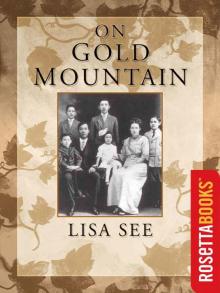 On Gold Mountain: The One-Hundred-Year Odyssey of My Chinese-American Family
On Gold Mountain: The One-Hundred-Year Odyssey of My Chinese-American Family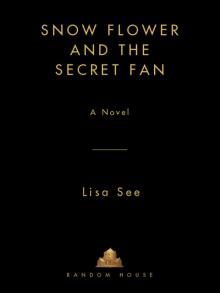 Snow Flower and the Secret Fan
Snow Flower and the Secret Fan Peony in Love
Peony in Love Flower Net
Flower Net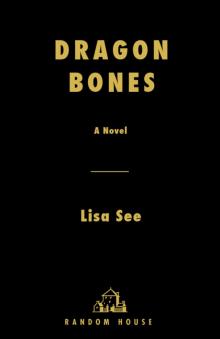 Dragon Bones
Dragon Bones Shanghai Girls
Shanghai Girls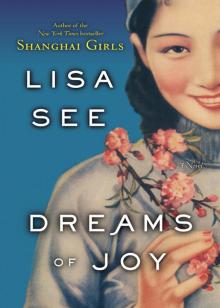 Dreams of Joy
Dreams of Joy The Island of Sea Women
The Island of Sea Women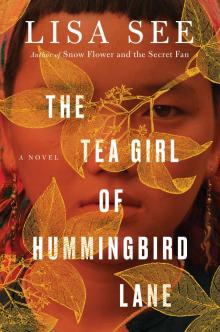 The Tea Girl of Hummingbird Lane
The Tea Girl of Hummingbird Lane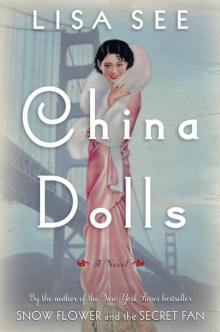 China Dolls
China Dolls The Interior
The Interior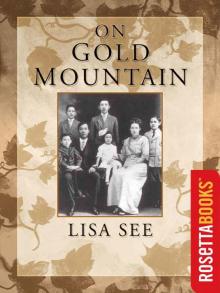 On Gold Mountain
On Gold Mountain